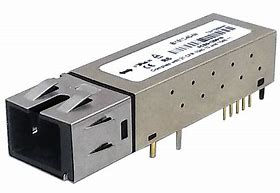Product Center
| Fiber Optic Transceiver Module
The optical module consists of a photoelectronic device, a functional circuit and an optical interface, etc. The photoelectronic device includes two parts: transmitting and receiving. Simply put, the role of the optical module is to convert the electrical signal into an optical signal at the sending end, and then convert the optical signal into an electrical signal at the structure The transmitting part is: the electrical signal input a certain bit rate is processed by the internal driver chip to drive the semiconductor laser (LD) or light emitting diode (LED) to The receiving part is: the optical signal of a certain bit rate is input into the module and converted into an electrical signal by the optical detection diode, and the electrical signal sort According to function It includes optical receiving module, optical transmitting module, optical transceiver integrated module and optical forwarding module. The main function of the integrated optical transceiver module is to achieve photoelectric/electro-optical conversion, including optical power control, modulation and In addition to the photoelectric conversion function, the optical forwarding module also integrates a lot of signal processing functions, such as: MUX/DEMUX, CDR, function Optical transceiver integrated module, English name transceiver, referred to as optical module or optical fiber module, is an important device in optical fiber communication system. According to parameters Pluggability: hot and non-hot Package form: SFP, GBIC, XFP, Xenpak, X2, 1X9, SFF, 200/3000pin, XPAK. Transmission rate: The transmission rate refers to the number of bits transferred per second, in Mb/s or Gb/s. Optical module products cover the following major rates: Per package 1.XFP (10 Gigabit Small Form Factor Pluggable) is a heat exchangeable, communication protocol-independent optical transceiver for 10G bps Ethernet, 2. Small pluggable optical transceiver (SFP), currently the most widely used. 3.GigacBiDi series single-fiber bidirectional optical modules use WDM technology to realize the transmission of bidirectional information number 4.RJ45 Electrical port Small pluggable module, also known as electrical module or electrical port module. 5.SFF is divided into 2x5, 2x10 and so on according to its pins 6. Gigabit Ethernet Interface Converter (GBIC) module 7. Passive optical network PON(A-PON, G-PON, GE-PON) optical module 8.40Gbs high-speed optical module. 9.SDH transmission module (OC3, OC12, OC48) 10. Storage module, such as 4G, 8G, etc |
